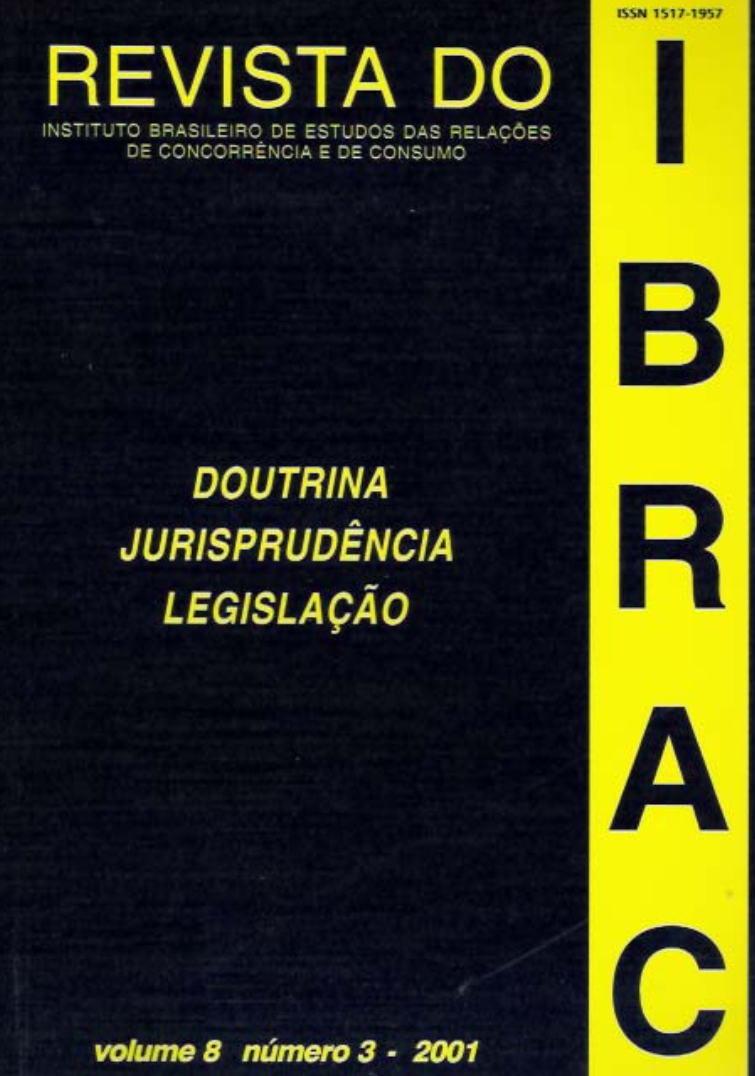Trade, transparency and competition FTAA and CER
Conteúdo do artigo principal
Resumo
This paper shows that asymmetric information, entry barriers and market power are the basic sources of anticompetitive behavior and argues that trade liberalization is a necessary but not sufficient condition to foster competition in the domestic market of small economies. This statement implies a challenge to the Free Trade Area of the Americas (FTAA) initiative as 22 countries in the Western Hemisphere do not have competition policy institutions. After highlighting some aspects of the US antitrust experience over the last 25 years and indicating that anticompetitive behavior is not related to market size, the paper reviews the processes of economic reform in Australia and New Zealand to show that the Closer Economic Relations Agreement (CER) between these countries provides lessons that are useful for addressing the FTAA challenge.
Downloads
Detalhes do artigo

Este trabalho está licenciado sob uma licença Creative Commons Attribution 4.0 International License.
Referências
ALLPORT, P. (1997), "Market Dominance in Business Acquisitions"Compliance (Commerce Comission Newsletter), June 1997, Wellington. Disponível em: (http://www.comcom.govt.nz)
AUSTRALIAN COMPETITION AND CONSUMER COMMISSION (1997), Merger Guidelines: Three Year Overview, Commonwealth of Australia, Canberra. Disponível em: (http://www.accc.gov.au).
BAUMOL, W. and ORDOVER, J. (1992), "Antitrust: Source of Dynamic and Static Inefficiencies?" in Antitrust, Innovation, and Competitiveness, Thomas M. Jorde and David J. Teece (eds.), Oxford University Press.
BELL, S. (1993), Australian Manufacturing and the State, Cambridge University Press.
CORDEN, M.W. (1957), "The Calculation of the Cost of Protection" The Economic Record, 33 (64), pp.29-51.
CORDEN, M.W. (1997), The Road to Reform: Essays on Australian Economic Policy, Addison Wesley, Sydney.
DYSTER, B., and MEREDITH, D. (1990), Australia in the International Economy in the Twentieth Century, Cambridge University Press. 1
press-files.anu.edu.au
press-files.anu.edu.au
EVANS, L., GRIMES, A., WILKINSON, B., and TEECE, D., (1996) "Economic Reform in New Zealand 1984-95: The Pursuit of Efficiency"Journal of Economic Literature, Vol. XXXIV, December, pp.1856-1902.
HILMER COMMITTEE (1993), National Competition Policy, Australian Government Publishing Service, Canberra.
INDUSTRY COMMISION (1997), Trade and Assistance Review, Commonwealth of Australia, Canberra. Disponível em: (http://www.indcom.gov.au).
JATAR, A. J., and TINEO, L. (1998), "Competition Policy in the Andean Region: Ups and Downs of a Policy in Search of its Place" in The Andean Community and the United States: Trade and Investment Relations in the 1990s, Miguel Rodriguez Mendoza, Patricia Correa and Barbara Kotschwar (eds.), Organization of American States, Washington.
KWOKA, J., and WHITE, L. (1994), The Antitrust Revolution: The Role of Economics, Oxford University Press.
KUME, H. (1996), A Política de Importação no Plano Real e a Estrutura de Proteção Efetiva" Texto para Discussão n. 423, Instituto de Pesquisa Econômica Aplicada: Rio de Janeiro.
LATTIMORE, R., and WOODING, P. (1996), "International Trade" in A Study of Economic Reform: The Case of New Zealand, Brian Silverstone, Alan Bollard and Ralph Lattimore (eds.), North Holland.
MASCARENHAS, R.C. (1996), Government and the Economy in Australia and New Zealand: The Politics of Economic Policy Making, Austin & Winfield.
MASSEY, P. (1995), New Zealand: Market Liberalization in a Developed Economy, MacMillan Press.
ORGANIZATION OF AMERICAN STATES (1997a), Inventory of Domestic Laws and Regulations Relating to Competition Policy in the Western Hemisphere, OAS Trade Unit: Washington. Disponível em: (http://www.ftaa-alca.org).
ORGANIZATION OF AMERICAN STATES (1997b), Report on Developments and Enforcement of Competition Policy and Laws in the Western Hemisphere, OAS Trade Unit: Washington. Disponível em: (http://www.ftaa-alca.org).
RATTIGAN, A., (1986), Industry Assistance: the Inside Story, Melbourne University Press.
RATTIGAN, A., CARMICHAEL, W., e BANKS, G. (1989), "Domestic Transparency and the Functioning of the GATT System"document prepared for the Trade Policy Research Centre, London.
RODRIGUEZ, A., and COATE, M. (1996), "Limits to Antitrust Policy for Reforming Economies" Houston Journal of International Law, 18 (2).
STIGLITZ, J. (1989), "Imperfect Information in the Product Market" in Handbook of Industrial Organization, Vol. I, Richard Schmalensee and Robert D. Willig, North-Holland.
STOLPER, W., and SAMUELSON, P. (1941), " Protection and Real Wages" Review of Economic Studies, 9, pp.58-73.
US INTERNATIONAL TRADE COMMISSION, (1998) The Year in Trade: Operation of the Trade Agreements Program During 1997, Washington.
VAUTIER, K., and LLOYD, P. (1997), International Trade and Competition Policy: CER, APEC and the WTO, Institute of Policy Studies, Wellington.

